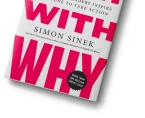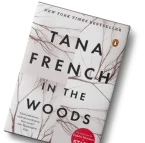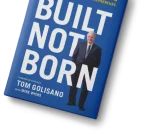
Every mystery novel is a conversation between you and your reader. You plant clues, they follow the trail—and at the end, you surprise them with the truth. If you’ve ever wondered how to write a mystery novel, or asked how do you write a mystery, you’re in the right place.
We’ll get into clear, structured steps balanced with storytelling craft and emotional depth to help you outline, write, and polish a gripping mystery. And yes, you’ll even get guidance on writing a tightly-wound, 150-word mystery story to flex your plotting muscles. Let’s unfold the secret to writing a novel that readers can’t sleep without finishing.
Need Help Structuring Your Mystery?
We guide you in crafting tight plots, clues, red herrings, and satisfying reveals that grip readers till the end.
Outline My Story1. Define Your Core Mystery
The Burning Question
What does your reader want answered? Who did it? Why did it happen? This question is your story’s engine—it fuels every scene.
Example:
- Who sabotaged the town’s water supply before the summer festival?
- Why did the heir disappear on his wedding day?
The Next-Level Stakes
What happens if the reader—or your detective—never finds out? Emotional stakes are just as important as plot stakes: family trust is shattered. A community plunged into panic. A detective haunted by failure.
2. Outline Your Mystery Novel with Intention
The 6-Step Mystery Novel Writing Outline
- Hook – Open with mystery in motion (a body discovered, equipment tampered, secret message)
- Investigation Begins – Introduce your detective, their goals, vulnerabilities
- Complications & Red Herrings – Add twists that feel real and character-driven
- Rising Tension – Build conflict between characters; let clues intensify anxiety
- The Reveal – Make the solution surprising but logical—reward the breadcrumbs
- Aftermath – Let your characters process and reflect after the emotional climax
Chapter Organization
Frame each chapter with purpose: set a small goal, end on tension or a question, and push either plot or emotional growth.
Struggling With Story Structure?
Work one-on-one with our expert coaches to develop a gripping mystery plot that keeps readers guessing.
Get Coaching3. Master Clues and Red Herrings
Planting Clues
Scatter important details in dialogue, descriptions, and even character reactions. But disguise them. A passing comment about a broken lock later becomes vital. Your job is to make it feel natural.
Misdirecting With Care
Red herrings shouldn’t feel like tricks—they should come from character flaws or believable motives. Use suspicion-driven actions that don’t contradict the clues, just shift attention.
Human tip: in your draft, highlight every clue and red herring. Then ask: does this feed the mystery, or distract? If it distracts, revise.
4. Develop a Real Detective
Give Them Depth
Maybe your detective is broken—a former cop wrestling with guilt. Maybe they’re an outsider surviving on cleverness. What do they crave? Justice, redemption, peace?
Reveal Through Action
Your detective’s choice to skip dinner and canvass suspects says more than 10 pages of backstory. Let their instincts guide them, and readers feel like they’re meeting someone real.
5. Crafting Tension and Drama
Scene Rhythm
Alternate slow-burn revelations with bursts of conflict. Let a quiet, clue-laden scene be followed by a frantic chase or argument.
Perspective and Suspense
Mostly follow your detective’s point of view, but break from time to time. Show the antagonist’s heartbeat. Give readers small pieces of knowledge the detective doesn’t have yet. It keeps them hooked.
Have a Mystery Idea But No Time to Write?
Our ghostwriters can turn your idea into a complete, suspenseful, and professionally written mystery novel.
Hire a Ghostwriter6. Write the Reveal That Resonates
Surprise, Not Shock
Avoid cliché twists. Your reveal should feel earned, like a puzzle falling into place.
Emotional Echo
The revelation should solve the plot, and reflect the detective’s inner journey. If they find the culprit, what does that say about the detective’s values?
Close With Change
In your final pages, show how the detective—the story world—has changed. A small reflection, a new resolution, or a subtle moment of calm can speak volumes.
7. Try Your Hand at a 150‑Word Mystery Writing Practice
Short practice builds skill. Here’s a template:
- First sentence – a clue or incident
- Middle – tension rising, perspective shifting
- Last line – a reveal or emotional hook
Example:
Sandra always took the last train home. Tonight, her purse wasn’t where she left it, but the guard’s lanyard lay at her feet. His eyes were empty when she asked why. He shrugged. “Mistakes happen.” But Sandra remembered the glare in the break room—his stare when she got the promotion. She reached for the guard’s pocket. In his hand, caught like a moth in a jar, was her name stitched in black thread. Someone knew. And tonight’s mistake wasn’t accidental.
8. Edit, Refine, and Think Beyond Words
Tackle Structural Revision
Review: are clues visible? Are scenes pushing your plot or characters forward? Does each chapter end on tension?
Deepen the Emotional Core
Give small moments meaning. A detective’s pause to look out a window, hesitate before entering a room—they ground your story in human truth.
Not Sure How to Structure Your Story?
We help you map your mystery using classic frameworks: setup, discovery, confrontation, and resolution.
Map My PlotConclusion:
Writing a mystery isn’t just puzzle-making—it’s emotional orchestration. Your mystery novel succeeds when readers care: about the crime, the characters, and the stakes you’ve raised. Every clue you plant, every secret you withhold, every scene you close on tension builds a bond between you and your reader.
If you’re ready for expert help, Estorytellers offers plotting support, manuscript feedback, and publishing strategies tailored to mystery writers. From outlining your next thriller to polishing your draft for publication, we’ll help make your story impossible to put down.






























